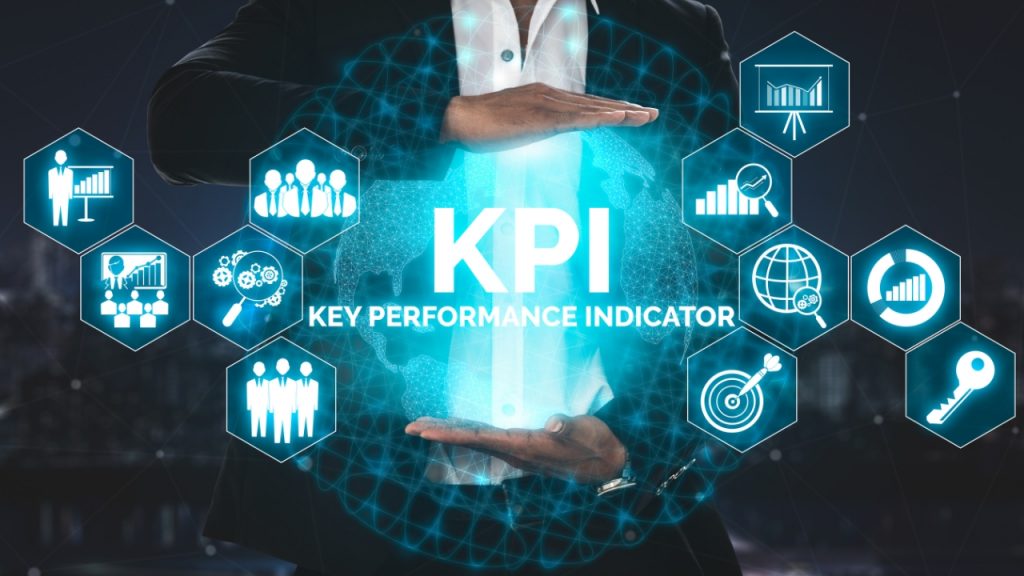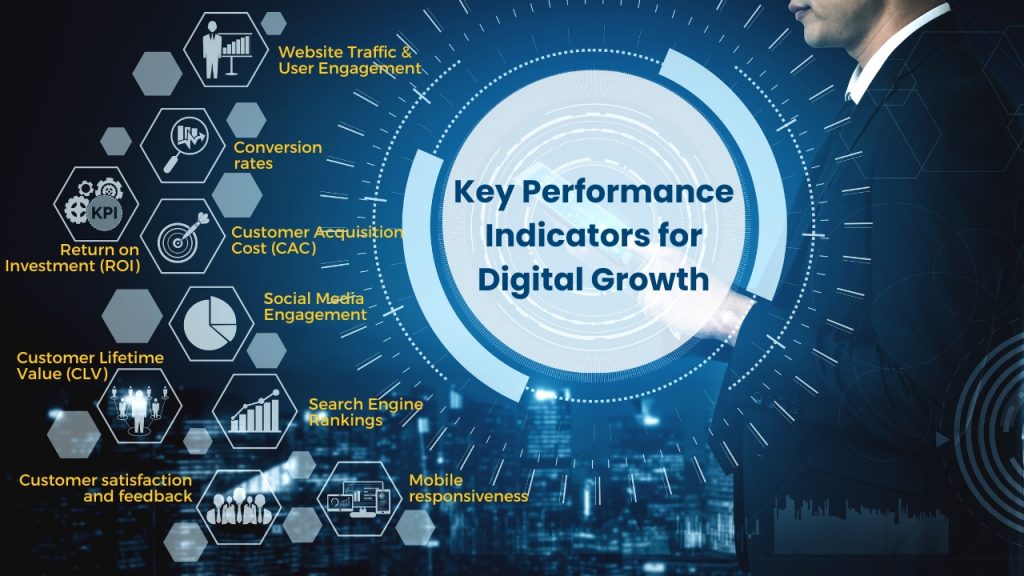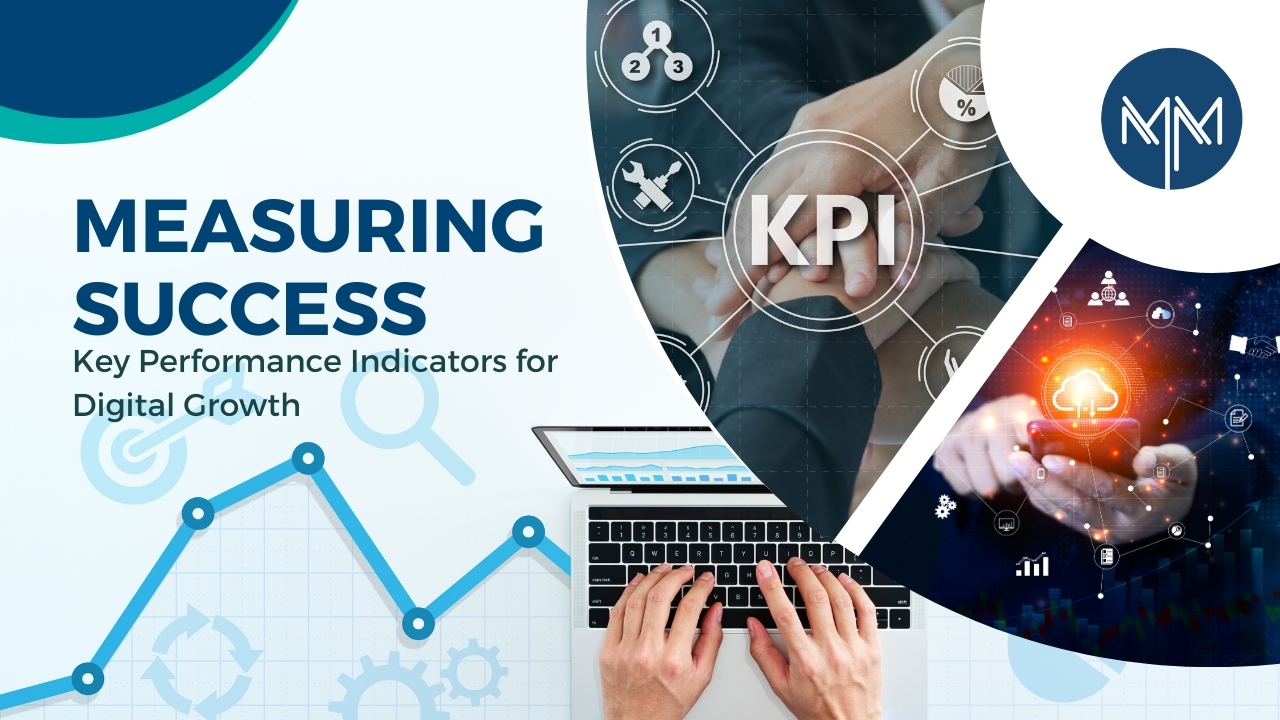Digital marketing has changed the overall scenario of success for businesses. The growth of business is not just dependable on the bottom line. It’s about understanding and optimizing the numerous facets of your online presence to drive sustainable growth.
Effective digital marketing hinges on tracking the right Key Performance Indicators (KPIs). These metrics provide insights into campaign success, guiding informed decisions for future optimizations. Choosing the appropriate KPIs ensures strategic alignment with business goals, maximizing the impact of your digital efforts in a dynamic and competitive landscape.
Let’s understand the importance of Key Performance Indicators for Digital Growth:
Key Performance Indicators (KPIs) are the compass guiding digital growth. By quantifying and assessing various metrics, KPIs clearly understand a business’s online performance. Whether tracking website traffic, conversion rates, or social media engagement, these indicators provide actionable insights. KPIs enable businesses to identify successful strategies, optimize underperforming areas, and make informed decisions for sustainable digital growth. In the fast-paced digital landscape, leveraging KPIs is not just beneficial—it’s imperative for staying agile, competitive, and strategically aligned with overarching business objectives.

Decoding Digital Success: KPIs in Focus
Key Performance Indicators (KPIs) have evolved into the compass that directs businesses toward success in this age of data-driven decision-making. Let’s explore the key performance indicators (KPIs) that are crucial for gauging and attaining digital progress.
Website Traffic and User Engagement: Website traffic is the primary measure of digital performance. After all, if people aren’t visiting your site, you can’t expect conversions. Analyzing the number of visitors, unique visitors, and page views provides insights into your content’s effectiveness. Additionally, user engagement metrics, such as bounce rate, time on site, and pages per visit, give a nuanced understanding of how compelling and relevant your content is.
Conversion rates: Once visitors are on your site, the next crucial KPI is conversion rate—the percentage of visitors who take a desired action, such as making a purchase, filling out a form, or signing up for a newsletter. By monitoring conversion rates, you can make sure that your digital initiatives are producing measurable business results and optimize both your website and marketing tactics.
Customer Acquisition Cost (CAC): Comprehending the expenses associated with obtaining new clients is essential for long-term expansion. You may evaluate your marketing channels and campaigns’ effectiveness by computing the Customer Acquisition Cost. One of the most important tactics for getting the most out of your digital marketing spend is lowering CAC while keeping or raising conversion rates.
Social Media Engagement: One fact that you must be familiar with is that digital marketing now relies heavily on social media. You may learn more about the success of your social media initiatives by keeping an eye on engagement indicators like likes, shares, comments, and click-through rates on sites like Facebook, Twitter, and Instagram. Vigorous social media interaction increases website traffic in addition to brand visibility.
Customer Lifetime Value (CLV): While bringing in new business is critical, keeping the clients you already have is just as important, if not more so. CLV calculates how much money a company can make from a client over the course of their relationship. You may promote long-term growth and guarantee the viability of your company by raising CLV.
Return on Investment (ROI): ROI calculates how profitable your digital initiatives are. It evaluates and contrasts the income received from your digital channels with the expenses incurred. A positive return on investment (ROI) signifies that your digital endeavors are positively impacting your bottom line, whilst a negative ROI suggests that you should modify your approach.
Mobile responsiveness: As more individuals use the internet via mobile devices, it is critical to make sure your website is responsive. It is possible to gain insight into the user experience across various devices and make the required adjustments by keeping updated on metrics like mobile traffic, mobile bounce rates, and mobile user conversions.
Search Engine Rankings: High performance in the digital domain is largely dependent on Search Engine Optimisation (SEO). You can determine the effectiveness of your SEO methods by monitoring your website ranks for related keywords in search engine results pages. Improved visibility and organic traffic from higher ranks support the expansion of the digital economy as a whole.
Customer Acquisition Cost (CAC): Comprehending the expenses associated with obtaining new clients is essential for long-term expansion. You may evaluate your marketing channels and campaigns’ effectiveness by computing the Customer Acquisition Cost. One of the most important tactics for getting the most out of your digital marketing spend is lowering CAC while keeping or raising conversion rates.
Customer satisfaction and feedback: Ultimately, client satisfaction has a big impact on how well your digital initiatives perform. Use Net Promoter Score (NPS), reviews, and customer feedback surveys to find out how your target market feels about your products and services. While negative feedback offers insightful suggestions for improvement, positive feedback validates the effectiveness of your digital approach.

Short-term success is a valuable milestone, but the true essence of digital prowess lies in long-term sustainability. Through vigilant monitoring and interpretation of KPIs, businesses can navigate the complexities of the digital realm with agility and precision. It’s not merely about reacting to current trends; it’s about anticipating shifts and proactively adjusting strategies.
Conclusion
In conclusion, data and insights pave the way for digital progress. Businesses may adjust and optimize their digital strategy to ensure both short- and long-term sustainability in the ever-changing digital landscape by closely monitoring and evaluating these KPIs. Businesses that place a high priority on data-driven decision-making and continual improvement will be at the forefront of the digital revolution as the digital landscape continues to change.
It can be intimidating at first to understand the complexities of digital marketing. However, a strong online presence is necessary to succeed in the current, very competitive market. To do this, you need professional assistance. Our experienced digital marketing executives at Matrix Media Solutions provide accurate consultations that are designed to advance your digital initiatives. Our team guarantees the delivery of precise and customized digital solutions in the ever-changing world of online business, which is essential for the best possible digital growth for your company.


 June 06, 2023
June 06, 2023

